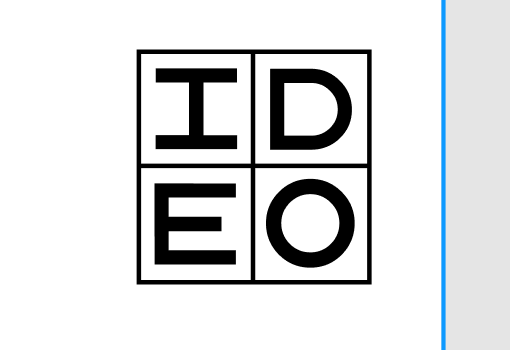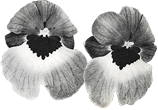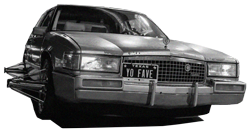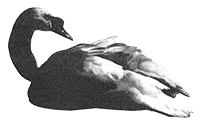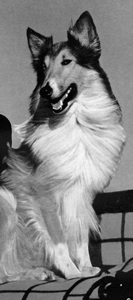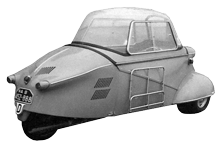For the second installment of the IDEO Play Lab mini-series on how to empower creative teams in the workplace, we captured a conversation between Play Labbers Elise Granata and Matt Hovde as they chatted about our team's secret sauce for making people feeling seen.
It's a more casual format, which we hope you'll enjoy. Not to get too meta, but that's also part of the secret sauce: making the stories we share with you feel joyful to produce.
As always, reach out at helloplaylab@ideo.com if your team could use some play in their day.
Matt: All right - welcome back! My name is Matt, and I’m a Game Designer and Experience Designer in Play Lab. I'm here with my colleague Elise.
Tell the folks out there who you are and what you do.
Elise: Honored to! My name is Elise, much like Matt's name is Matt. I'm a Community Lead here at IDEO in the Play Lab. I’m a little obsessed with community building, and I love that my days include designing the gatherings, experiences, and tools that help others feel connected and playful here.
Matt: This feels like it aligns very nicely with our mission today, don't you think?
Elise: Big time.
Matt: So last time I introduced this framework of what creative teams need to feel to be at their best: They need to feel successful and seen in order to do their best work.
In the last article, Kezie Todd, one of our Game Designer colleagues, joined me in looking for inspiration from game design to explore ways to make people feel successful. We talked about mechanics like feedback loops, progressive skill synthesis, and onboarding.
Today, Elise and I are going to talk a little bit about this concept of feeling seen in our teams.
So first of all, I see you, Elise. In that I'm literally seeing you.
Elise: I see you, Matt.
Matt: On the surface, we think of being seen as being acknowledged and appreciated. And that certainly is important – getting credit where credit's due, and kudos on those things.
But today, we're trying to think deeper about being seen. I'm talking about feeling like you can manifest your humanness. Feeling you can embody and bring your many identities and perspectives that you might carry into your workplace.
Elise: Loving it. You know, we often hear this story about "bringing your whole self" to the workplace, which is a pretty tall order. That’s why breaking it down in the way you have is so great.
Matt: And "bringing your whole self to work" is sort of a myth anyway, right? Like, you can't possibly bring your whole self because your whole self lives 24 hours a day, and has intersections with a large number of things outside of the world that you maybe choose not to bring into your workplace.
On Robert Putnam's Bonding & Bridging Framework – and how we can use it to build stronger teams
Earlier, you mentioned a framework to help people think about both sides of that experience. Could you explain more about that?
Elise: Yes! So there's this wonderful author named Robert Putnam who wrote books like Bowling Alone and Better Together, which explore the social infrastructure of the UnitWed States and what has historically made our sense of community stronger than it feels now. One of his core framings is really similar to what you’re describing: Bonding and Bridging.
Bonding happens when you connect deeply with people like you. And that could be because of a shared hobby that you have, or because of your common identity across age, race, and gender. Or maybe a practice that you do in the workplace. Of course, that might mean somebody on the same team as you or somebody at the same level. Bridging happens when you're actually connecting with people different than you. When it comes to community building, Bonding is great, but Bridging is basically like super glue.
On Kraftwerks as a recurring ritual for nerding out
We experiment with so many rituals to help with our team bonding and bridging in Play Lab. What’s a team ritual that comes to mind for you?
Matt: One of the things that we do that I really get a lot of energy out of in Play Lab is called Game Design Kraftwerks – and we spell it with a K and an E, but I'm not going to tell you where the K is and where that E is [editor’s note: this is funnier when spoken].
During Kraftwerks, we focus on Game Design during whatever time we can carve out. We meet once a week. Sometimes it's for 15 minutes, sometimes it's an hour. We talk a lot about what we're playing. We talk about trends that we're seeing out in the world. We talk about our current project work and how we are bringing the lens of game design into each project. And we help each other bring those things out.
The benefit of having these kraftwerks is that you just feel like you're talking to your people – talking shop with people that get it makes you feel so comfortable.
Elise: I love that. One thing that came up for me while you were talking about the magic of Game Design Kraftwerks was how moments of bonding like that really eliminate the need to contextualize or explain jargon. And that is so important when you want to go deep in a topic area or thing that you care about. That can even be applied to an example of a meeting with a group of other directors at your level in your organization. You might have shared languages and experiences that might not be as easily understood by people below or above your level.
When I first joined Play Lab, I loved seeing how many of our team rituals go deep and broad at the same time. Kraftwerks is such a wonderful way to just allow people to essentially nerd out together and build that safety, which is awesome.

Matt: Nerding out together is a perfect way to feel seen.
Elise: And when looking at that from the lens of Experience Design, the power of Kraftwerks is that it’s a meeting that essentially formalizes that. It elevates it to what it is – especially in Play Lab’s work – which is actually like a craft.
Not to get too meta about it, but these moments are all signals from leadership, too. The way we show what we value is demonstrated by how we spend our time. By making space for things like Kraftwerks, we show that Play Lab is a team that really cares about the craft.
Matt: Because if you're not spending time thinking about craft, like, where else will we really develop our play perspective? And it's a great way to bring this bonding that you were talking about.
How Play Lab's weekly team meeting sparks crossover connections
Maybe you can talk a little bit about how you've helped us build some bridges in our team.
Elise: So we joke that the structure of Play Lab is like a fried egg. The yolk is our toy invention offering, where we design toys that are then pitched and sold to major toy companies and distributors. That’s where we learn a lot about play principles, youth insights, and playtest a ton. And then our consulting practice – the egg white, if you will – is where we really apply the craft of play through Game Design and Experience Design, as you’ve been saying.
Every Monday we actually bring the entire team – both the toy invention side and the consulting side – together in what we call our Monday Catch-Up.
That structure might seem pretty standard, but our principles make it special. We always begin with a game or creative warm-up to play together, which, especially for us in Play Lab, means quite literally practicing what we preach. We then move into business updates and shoutouts, then close with shared gratitude for each other. A core piece of this ritual to me is that other people are talking way more than I am even though I’m the host of the gathering. I'm really just there to set up the potluck and kind of tee other people up to talk about a toy concept that they're tinkering with, or go really deep on a project that they just wrapped and tell us the story of how that went and what they learned.
👆 Actual footage from our weekly Catch-Up as the team playtested a party game!
For example, a designer might share about a warm-up they led for a client that included roleplaying elements of Dungeons and Dragons. And that might spark something for our toy inventors, who are obviously constantly thinking about game design and actually creating products around that.
By elevating people equally across both sides of the team, and making sure that we’re always mixing it up with speakers across levels, across tenures, and across disciplines, we make this time a time of bridging.
Matt: It's so fun how that builds an identity of the team as a whole. We practice play together and learn from each other and then go back to our own world inspired by some of these other things that we've seen.
Another example of an experiment that really paid off for us: We did an in-person team building week. We had just brought on a bunch of new designers, and we were looking to have everyone get excited about the work we're doing and to understand what each person was bringing into the team.
Using novelty to learn about your coworker's hidden opera talent
And we did an exercise during that week called PechaKucha. Do you know what a PechaKucha is?
Elise: I think I do, but explain it to me again.
Matt: Okay. So PechaKucha is a phrase that means chit-chat or chatter, and it's a structured PowerPoint share. Does that sound horrible? It probably does. But no, it's not! It's brilliant. Okay. So the legend has it that it was designed by two Tokyo architects who are trying to get their students to give more dynamic presentations. And so they came up with a very systematic set of rules for how a presentation can free people up from the long text-reading-from-your-notes style of presentation, which most people find very boring and not engaging.
The rules are basically you make a slide show on Google slides or PowerPoint or whatever, and then you get a set number of slides in a set amount of time that each slide appears. This could be like five slides at one minute each. Or you could do like 20 slides each for 20 seconds.
The second thing is, you're not allowed to read off of paper and you can't put text on the slides that you're reading directly. It forces you to speak authentically. You have the idea of what you're trying to talk about, and you're using the images to spark the way that you talk about it, and that forces you also to look at your audience and look at the presentation and kind of make that feel a little bit more organic.
So does that sound like the worst thing you've ever done?
Elise: No, no – that actually sounds fun. I’m in.
Matt: Well, public speaking isn't everyone's favorite thing. I think it's the world's number one fear or something. So this has to be built with a team that trusts each other, where people would feel comfortable with this.
But the reason I bring this up is that in this team exercise that we did almost two years ago, we each got to talk about whatever topic we wanted to. And to this day, we still talk about what we learned from each other and how everyone showed up differently. Some people were very visual. I'm a terrible visual designer. My slides looked like hilarious PowerPoint or like Photoshops from 1990. Like, they were terribly made. But what I like to do is have fun with that and make little jokes.
But other people maybe focused on a small part of their own identity. Kezie did a whole PechaKucha on Irish slang. We all were laughing and sharing and now we have these like phrases that she taught us from Irish slang.
We still remember that share. PechaKucha was a way for us to show our specialness, our uniqueness, something that mattered to us. And then you're just appreciating other people's passions and interests and style and all those things made us feel like, “I can't wait to work with this person”.
I even use PechaKucha outside of Play Lab internal stuff. I teach comedy for the Second City and DePaul University, and I make them do their own PechaKuchas in character to try out the characters they're working on.
Like, I love this thing. Have I sold you?
Elise: I'm sold. And I think that to your point earlier about novelty – I remember a colleague once talking to me about having just reinvented some kind of meeting structure and it was like six weeks after they introduced the new format. And he started to notice a decline in excitement, engagement, and attendance. He was like, “I feel like people only really like a thing when it's new!” And I agreed and we sort of lamented over it for a moment, but then we realized: That’s true. And it’s not a bad thing. It’s actually an interesting constraint.
I think for us all – as culture makers, as leaders, as experience designers within our workplaces or, you know, in the world – we should think of novelty as a requirement for ritual design. Which is what makes the PechaKucha format so interesting. It takes something that could be very boring but actually brings a structure to it that makes it, you know, novel.

Matt: On the flip side, Game Design Kraftwerks is a repeatable thing that we kind of know what to expect with it. Part of the benefit is its familiarity. We know what to expect and we kind of get excited. Same thing with our Weekly Play Lab Catch-Up; we kind of get excited to go every week.
PechaKucha was an example of a one-time-thing that we tried as an experiment, and not necessarily meant to be done every week or even every month. We did it once. And it just stood out and it was very memorable.
Maybe it’s a balance of things that become ritualized and things that become spontaneous, like the “see what happens” kind of thing.
Follow the excitement to keep your workplace rituals fresh
Elise: Yes! And that spontaneity reminds me of another ritual we just began; a project team was working on a gaming project and had a weekly time where they would meet up and play games with each other. Y’know, keep the brains warm and silly. When they shared about that with the rest of the Play Lab team, everyone loved it, and we’ve since added that as a Play Lab wide team ritual twice a month. It has that effect of practicing what we preach – by playing games, sure – but also by experimenting with something new and following the heat of excitement.
And so just looking for that heat is important in my role. It’s also very basic at the same time, because it’s actually just about listening to the things people are saying and then supporting that with structure, consistency, and reflecting back what I'm hearing from others versus applying what I think might be best, which might be different or might be the same.
👆 Celebrating the release of Barbie and movie cameo of a Play Lab invention (the Chelsea treehouse!)
Matt: It's a blast. We've talked a lot today about things that we do internally to help our teams feel creative and powerful and all those internal benefits. But these techniques have been applied to project work with great success over the years, helping clients feel like they're breaking out of their ruts, their status quo.
You know, people get very used to doing business in a certain kind of way, and it's led to a certain kind of success. But they also know that if they keep doing things the same way over and over again, they run the risk of falling behind. They run the risk of burnout.
We do a lot of work with game companies and toy companies, but the bulk of our consulting work is done across industries that don't seem to have anything to do with play overtly. What we end up doing in those cases is helping them think in new creative ways about their challenge. We help teams who are doing really important work, like on climate change, or sustainability, or corporate culture behavior and equity and these things that really matter and helping them create these moments of feeling seen and feeling like they're able to connect to other people who care about what they're doing in a playful way, which lowers the barriers of stress and enables innovation. All these great benefits.
All of what we’re talking about today may sound like: Okay, you know, fun people are doing fun things. But it's always in service of the work that we're doing to help clients who are tackling these very, very important, awesome, worthy things do their jobs a little bit better, too.
To our readers, if you’re reading this and any of it sounds intriguing and you want to hear more, please reach out to us at helloplaylab@ideo.com.
We love to have conversations about this kind of stuff. We'd love to help you think about how to build some of these rituals and processes into your problem solving in your teams at your work. Thanks, Elise.
Elise: Thank you, Matt. Keep it playful!
Heading 1
Heading 2
Heading 3
Heading 4
Heading 5
Heading 6
Lorem ipsum dolor sit amet, consectetur adipiscing elit, sed do eiusmod tempor incididunt ut labore et dolore magna aliqua. Ut enim ad minim veniam, quis nostrud exercitation ullamco laboris nisi ut aliquip ex ea commodo consequat. Duis aute irure dolor in reprehenderit in voluptate velit esse cillum dolore eu fugiat nulla pariatur.
Block quote
Ordered list
- Item 1
- Item 2
- Item 3
Unordered list
- Item A
- Item B
- Item C
Bold text
Emphasis
Superscript
Subscript
